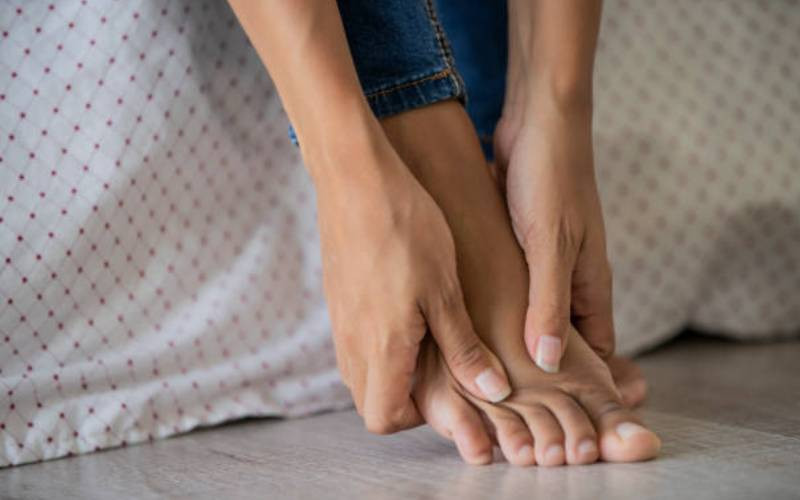
Have you ever felt a tingling, prickling or numb sensation in your arm or leg, almost like tiny pins and needles poking at your skin? This common and often harmless feeling, known as paraesthesia, happens when pressure on a nerve temporarily cuts off blood supply. It’s why you might experience that odd sensation after sitting in one position for too long or falling asleep with your arm tucked under your head.
According to the UK’s National Health Service (NHS), pins and needles typically disappear once you move and restore circulation. In most cases, it’s simply a sign that a limb has ‘fallen asleep,’ but if the sensation lingers or happens frequently without an obvious cause, it could indicate an underlying issue.
Conditions such as carpal tunnel syndrome, diabetes or nerve damage can lead to persistent paraesthesia, which requires medical attention.
There are two main types of pins and needles: temporary and persistent. Temporary paraesthesia occurs when pressure on a nerve or reduced blood flow causes a brief tingling sensation that disappears once you shift position. Persistent paraesthesia, on the other hand, may be a sign of a more serious health problem.
Chronic conditions such as circulatory disorders, nerve damage, autoimmune diseases or vitamin deficiencies can all contribute to ongoing tingling sensations. In some cases, metabolic issues, infections or even toxins can affect nerve function, leading to prolonged discomfort.
If persistent paraesthesia occurs, it may indicate a medical condition requiring treatment. Consulting a healthcare professional can help identify the cause and recommend appropriate interventions.
While occasional pins and needles are usually harmless, frequent or prolonged tingling should not be ignored, as it may signal a more serious issue affecting the nerves or circulation.
Here are tips to help relieve temporary pins and needles:
Change your position – If you've been sitting or lying in one position for too long, stand up, stretch and move around to relieve pressure on the nerve. This encourages normal blood flow and restores sensation.
Engage in gentle movement – Shaking or massaging the affected area can stimulate blood circulation and help nerves regain normal function. Try flexing and extending your fingers or toes to speed up recovery.
Hydrate properly – Dehydration can affect blood circulation and nerve function. Ensuring adequate water intake supports overall vascular health and reduces the likelihood of experiencing pins and needles.
Maintain good posture – Poor posture, particularly when working at a desk or using electronic devices, can compress nerves, leading to frequent tingling sensations. Adjusting your seating position and taking breaks to stretch can help prevent nerve compression.
Wear comfortable clothing and footwear – Tight shoes, socks or clothing that restrict circulation can contribute to paraesthesia. Choosing well-fitting footwear and avoiding excessive pressure on limbs can reduce the risk.
 The Standard Group Plc is a multi-media organization with investments in media
platforms spanning newspaper print operations, television, radio broadcasting,
digital and online services. The Standard Group is recognized as a leading
multi-media house in Kenya with a key influence in matters of national and
international interest.
The Standard Group Plc is a multi-media organization with investments in media
platforms spanning newspaper print operations, television, radio broadcasting,
digital and online services. The Standard Group is recognized as a leading
multi-media house in Kenya with a key influence in matters of national and
international interest.
 The Standard Group Plc is a multi-media organization with investments in media
platforms spanning newspaper print operations, television, radio broadcasting,
digital and online services. The Standard Group is recognized as a leading
multi-media house in Kenya with a key influence in matters of national and
international interest.
The Standard Group Plc is a multi-media organization with investments in media
platforms spanning newspaper print operations, television, radio broadcasting,
digital and online services. The Standard Group is recognized as a leading
multi-media house in Kenya with a key influence in matters of national and
international interest.











